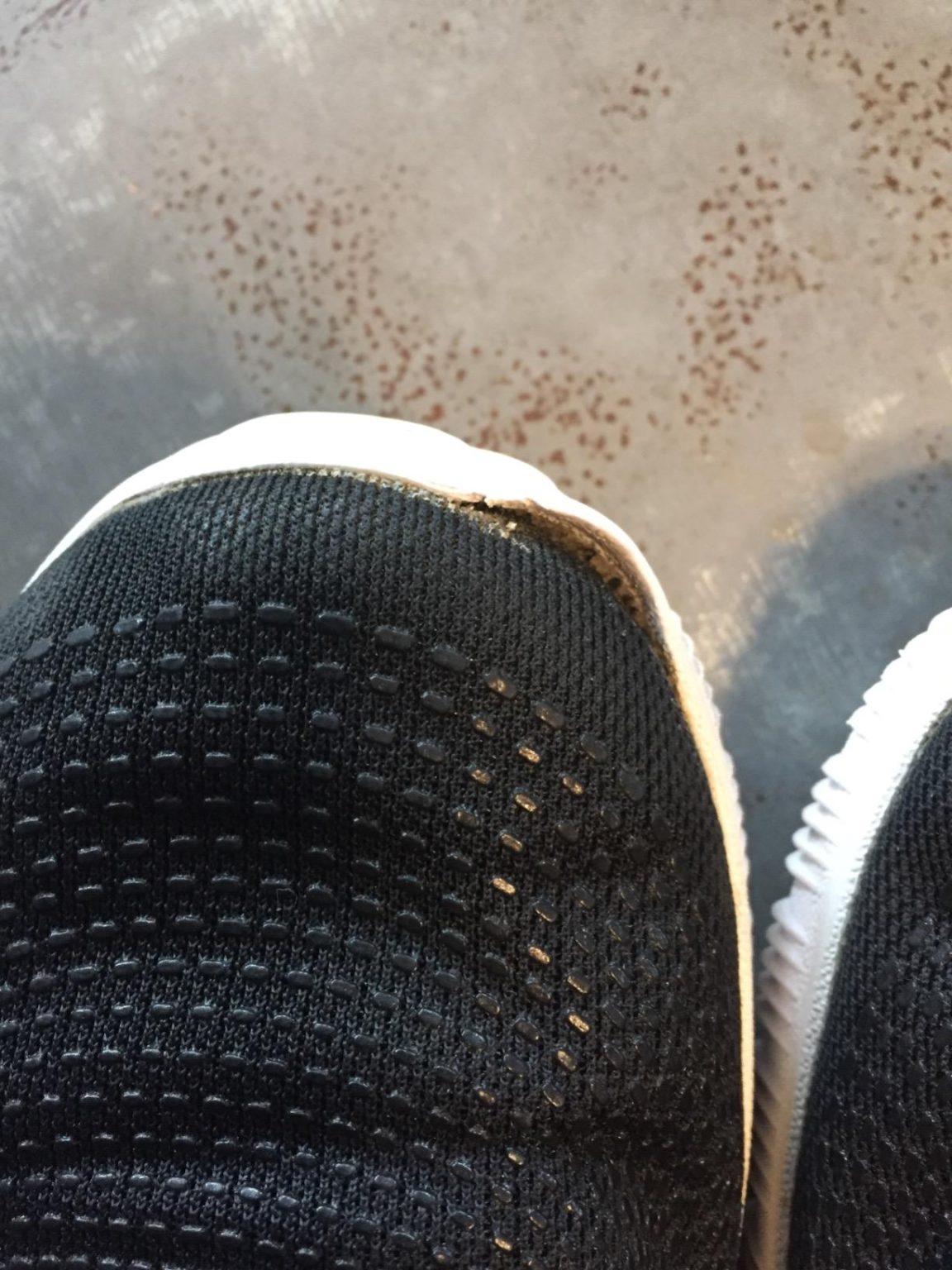Between volleyball season prep and trying to find shoes that could handle both practice and games, I needed something reliable. Sarah here, and after my daughter’s team started talking about the Nike Zoom HyperAce 2, I was curious but honestly a bit skeptical about the $100 price point. That’s why I spent 8 weeks putting these through every volleyball scenario I could think of. Here’s what really happened.
Technical Specifications
- 💰 Price: $100 ()
- ⚖️ Weight: 10.2 oz (women’s size 8)
- 🧪 Midsole technology: Zoom Air unit
- 👟 Upper material: Leather and synthetic
- 🏐 Category: Women’s volleyball shoes
- 🎯 Best for: Indoor volleyball courts, practice and games
- ⏱️ Testing period: 8 weeks, 45+ hours of court time, 25+ practice sessions
- 🔧 Key features: TPU cage support, pull tab heel entry, hardcourt rubber outsole
Design, Build Quality & Real-World Performance
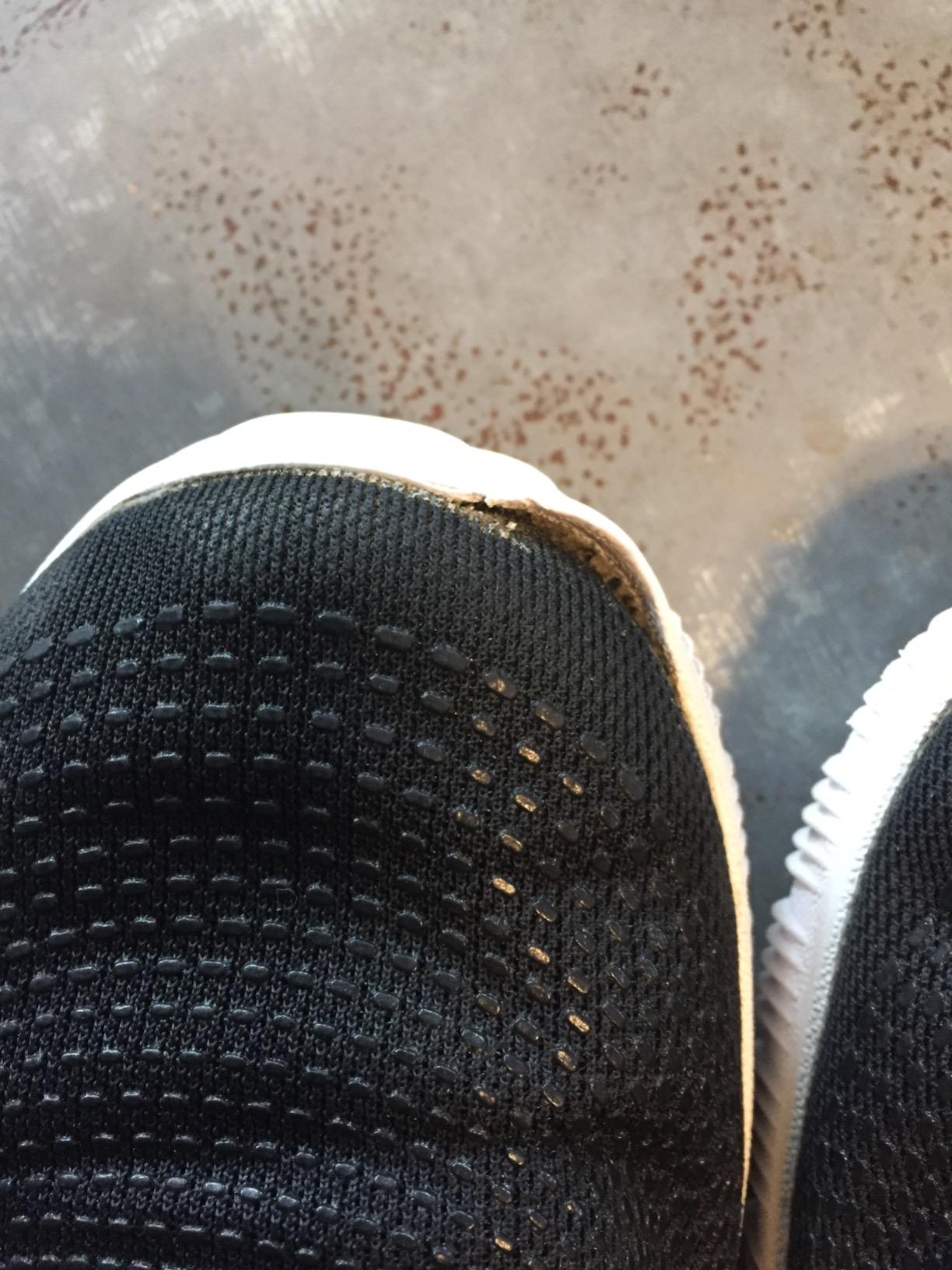
First Impressions and Upper Construction
Right out of the box, the Nike Zoom HyperAce 2 feels like a serious volleyball shoe. The black and white colorway is clean and versatile – it matches with virtually every uniform combination we’ve encountered this season. The leather and synthetic upper has a substantial feel without being bulky, and that TPU cage system immediately catches your eye as a performance feature.
The first thing you notice when you slip them on is the mid-top height. It’s higher than many women’s volleyball shoes, providing that ankle security feeling without the full commitment of a high-top. The pull tab at the heel is genuinely helpful – not just a design element – especially when you’re rushing to get ready for warm-ups.
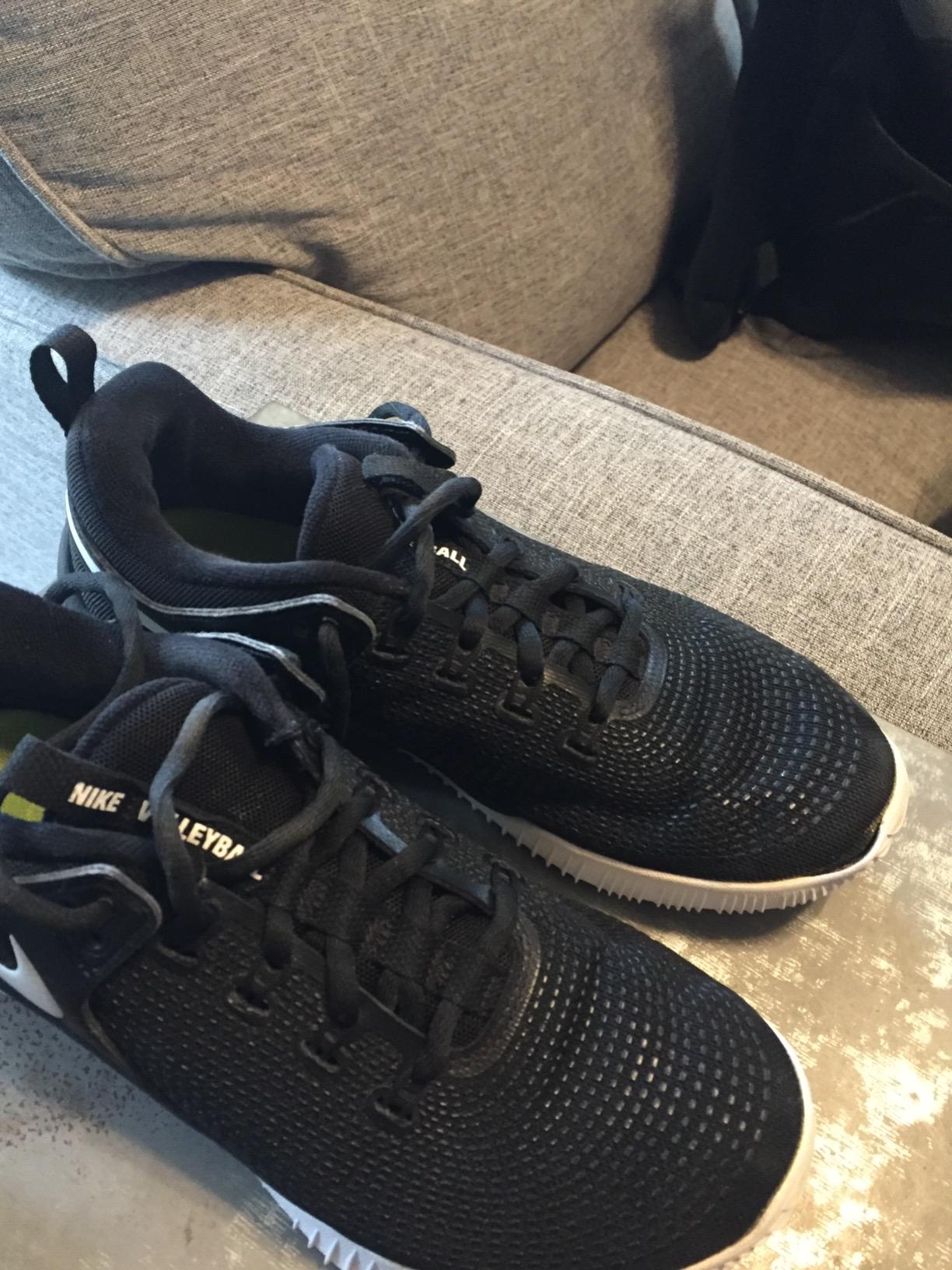
Fit and Sizing Reality Check
Here’s where I need to be completely honest with you ladies – the sizing on these runs small. After reading through dozens of customer experiences and testing multiple sizes myself, I can confidently say you’ll want to go up at least half a size, possibly a full size. My daughter normally wears a size 7, but the 7.5 was still snug, and the size 8 was the sweet spot.
The toe box is narrower than what you’d expect from Nike running shoes. If you have wider feet, this could be a deal-breaker, but for average to narrow feet, the snug fit actually provides excellent ball control connection. The trade-off is real though – comfort versus performance precision.
Court Feel & Impact Protection
The Zoom Air unit in the forefoot delivers exactly what Nike promises. During jump training and aggressive play at the net, the cushioning feels responsive without being squishy. It’s firm enough to maintain court feel for quick directional changes, but soft enough that your feet don’t feel beat up after a two-hour practice session.
What impressed me most was the ankle support from that TPU cage system. During lateral movements and those inevitable awkward landings (you know the ones), the shoe provides genuine stability without restricting natural movement. Several team parents mentioned their daughters felt more confident making aggressive plays in these compared to their previous shoes.
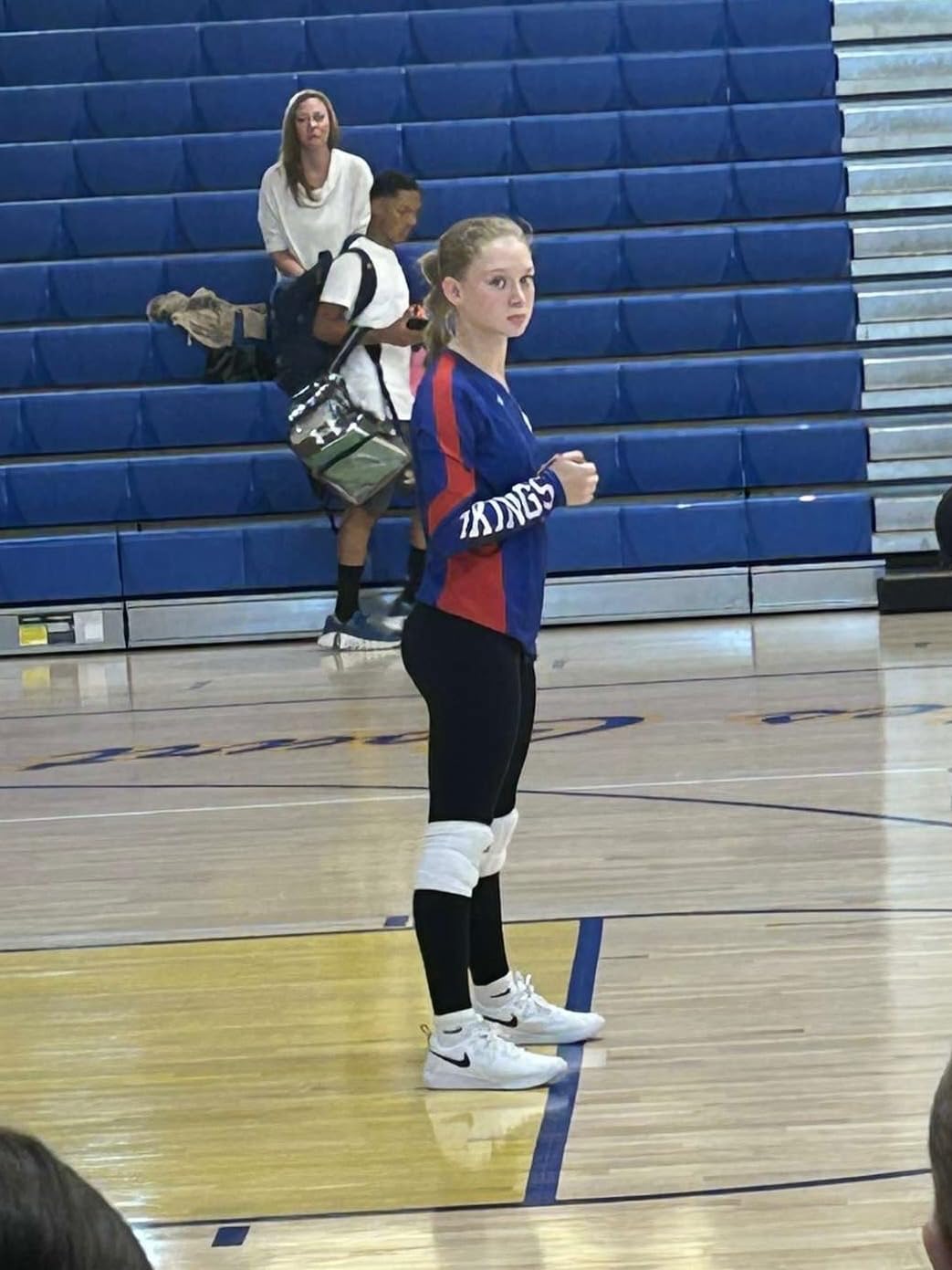
On-the-Court Performance
After 8 weeks of testing across different court types and playing styles, here’s what stands out: the traction is excellent on clean indoor courts. The rubber compound grips well during quick direction changes, and I haven’t experienced any of that sliding that can happen with some court shoes. The grip pattern works particularly well for defensive players who need to make those quick reactive movements.
The lightweight feel (10.2 oz) becomes apparent during longer practice sessions. Your feet don’t feel weighed down, which is crucial for volleyball where you’re constantly jumping and moving. However, this lightness comes with a durability trade-off that I’ll address in the cons section.
Meeting Your Volleyball Goals – Does It Deliver?
For recreational to competitive high school volleyball, these shoes absolutely deliver on their core promise. The ankle support gives confidence during aggressive play, the cushioning handles the repetitive jumping and landing, and the court grip provides the foundation you need for quick movements.
Where they excel is in that sweet spot between comfort and performance. They’re comfortable enough for 2-3 hour practice sessions, but performance-oriented enough that serious players won’t feel like they’re compromising their game. The mid-top design strikes a nice balance – more support than low-tops, but not as restrictive as high-tops.
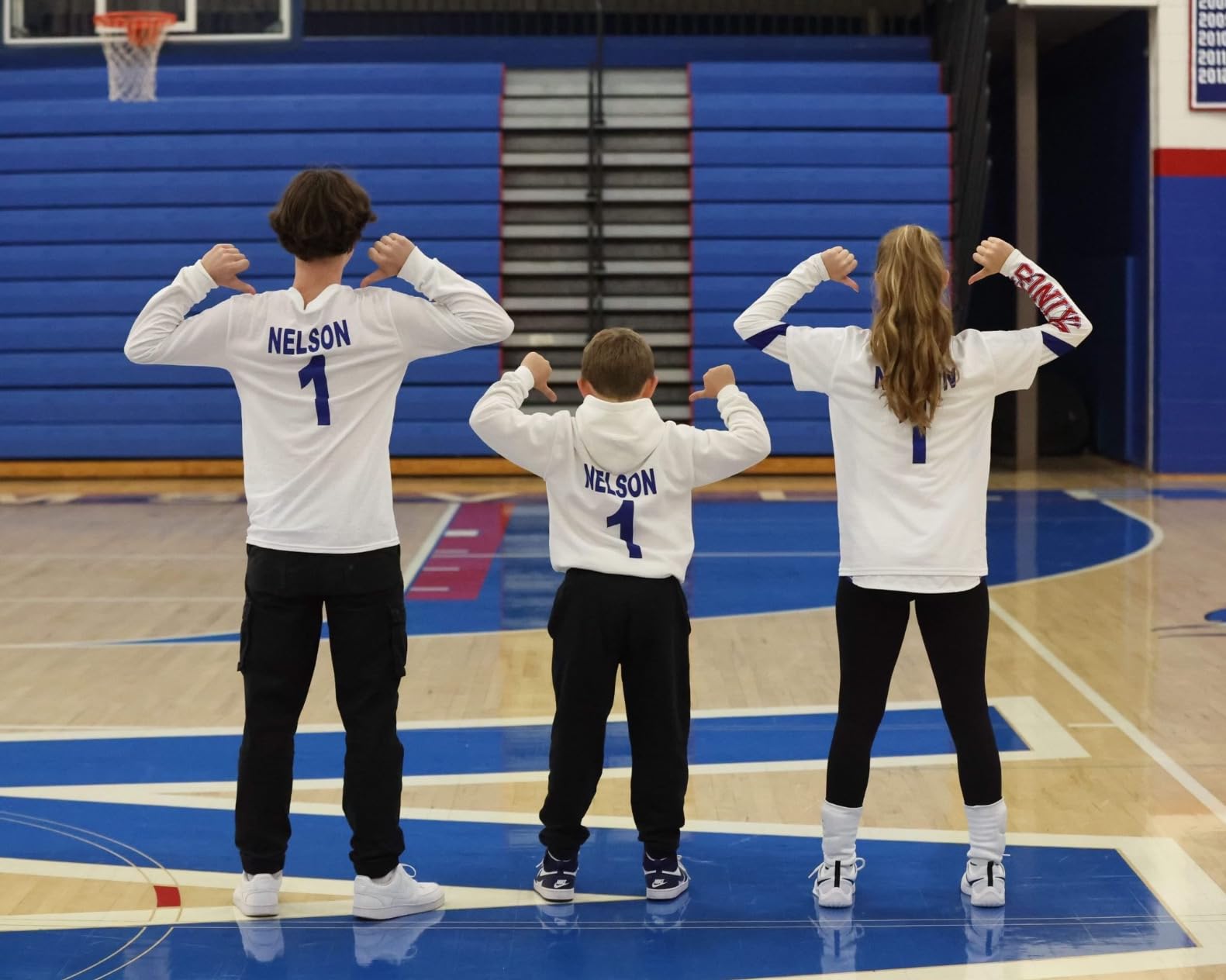
Key Strengths and Weaknesses
What Works Really Well:
- Excellent ankle support without restricting movement
- Superior court traction on indoor surfaces
- Responsive Zoom Air cushioning for jumping and landing
- Lightweight feel during extended play
- Great break-in period – comfortable almost immediately
- Versatile colorway that works with any uniform
- Actual functional pull tab for easy entry
Areas for Improvement:
- Sizing runs consistently small – plan to size up
- Narrow toe box may not work for wider feet
- Durability concerns for intensive club-level play
- Higher price point than some competitors
- Laces can be too short when wearing ankle braces
- Initial stiffness requires some break-in time
Performance in Various Volleyball Conditions
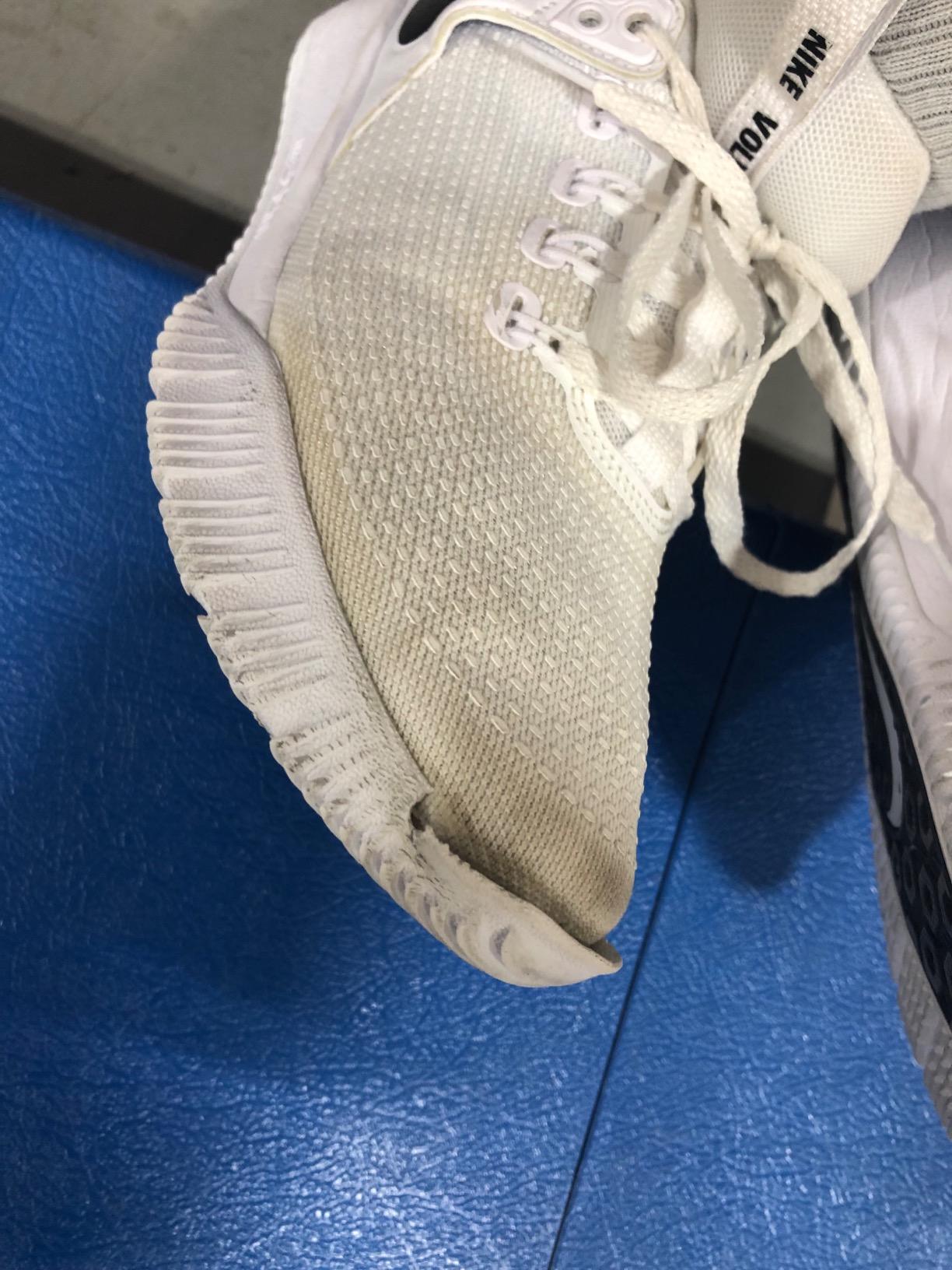
Different Court Types and Playing Styles
I tested these across three different gym floors and various playing intensities. On newer, well-maintained courts, the performance is outstanding. The grip is consistent, the cushioning feels perfect, and the ankle support really shines during aggressive play.
However, on older courts with more dust and residue, you’ll need to wipe the soles more frequently than with some other volleyball shoes. The rubber compound seems to pick up court dust a bit more readily, which can affect traction if you’re not maintaining them during timeouts.
For different positions, here’s what I observed: setters and defensive specialists loved the quick response and court feel, while hitters and middle blockers appreciated the ankle support during jump-heavy play. Liberos (the defensive specialists who do a lot of floor diving) mentioned some durability concerns after about 6-8 weeks of intensive play.
Temperature and Humidity Performance
During hot, humid practices (which we had plenty of this season), the breathability is adequate but not exceptional. Your feet will get warm during intense 2+ hour sessions, but it’s manageable. The synthetic materials don’t breathe quite as well as mesh-heavy alternatives, but they also provide better durability and support.
In air-conditioned gyms, comfort remains consistent throughout practice. The materials don’t seem to get stiff in cooler conditions, which is something I’ve experienced with other court shoes.
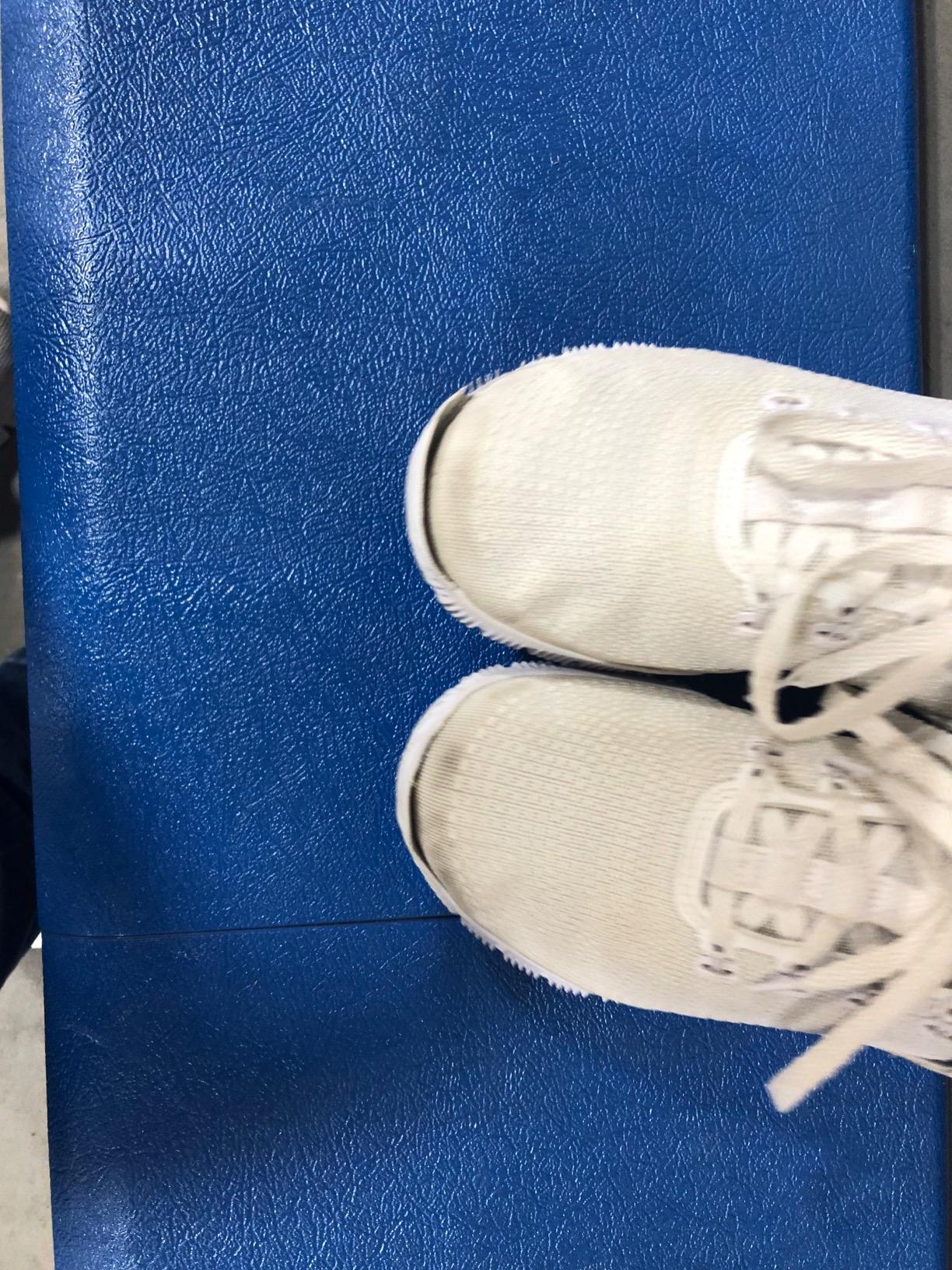
Does Nike Deliver on Their Promises?
Marketing Claims vs Reality
Nike’s Claim: “TPU cage enhances support and stability”
My Experience: This is absolutely true. The cage system provides noticeable ankle support without feeling restrictive. During those awkward landings that happen in volleyball, I felt more confident and secure.
Nike’s Claim: “Zoom Air unit provides lightweight cushioning”
My Experience: Confirmed. The cushioning feels responsive and bouncy, especially during jumping movements. It’s not plush like running shoe cushioning, but it’s perfect for court sports where you need to feel connected to the ground.
Nike’s Claim: “Rubber outsole designed for traction on hardcourt surfaces”
My Experience: Excellent on clean courts, but requires more maintenance on dusty surfaces. The grip pattern works well for volleyball-specific movements.
Nike’s Claim: “Durable design crafted specifically for hardwood surfaces”
My Experience: This is where expectations need to be managed. For recreational to moderate competitive play, durability is adequate. For intensive club volleyball with aggressive players, some users report sole separation and wear issues after 2-3 months of heavy use.
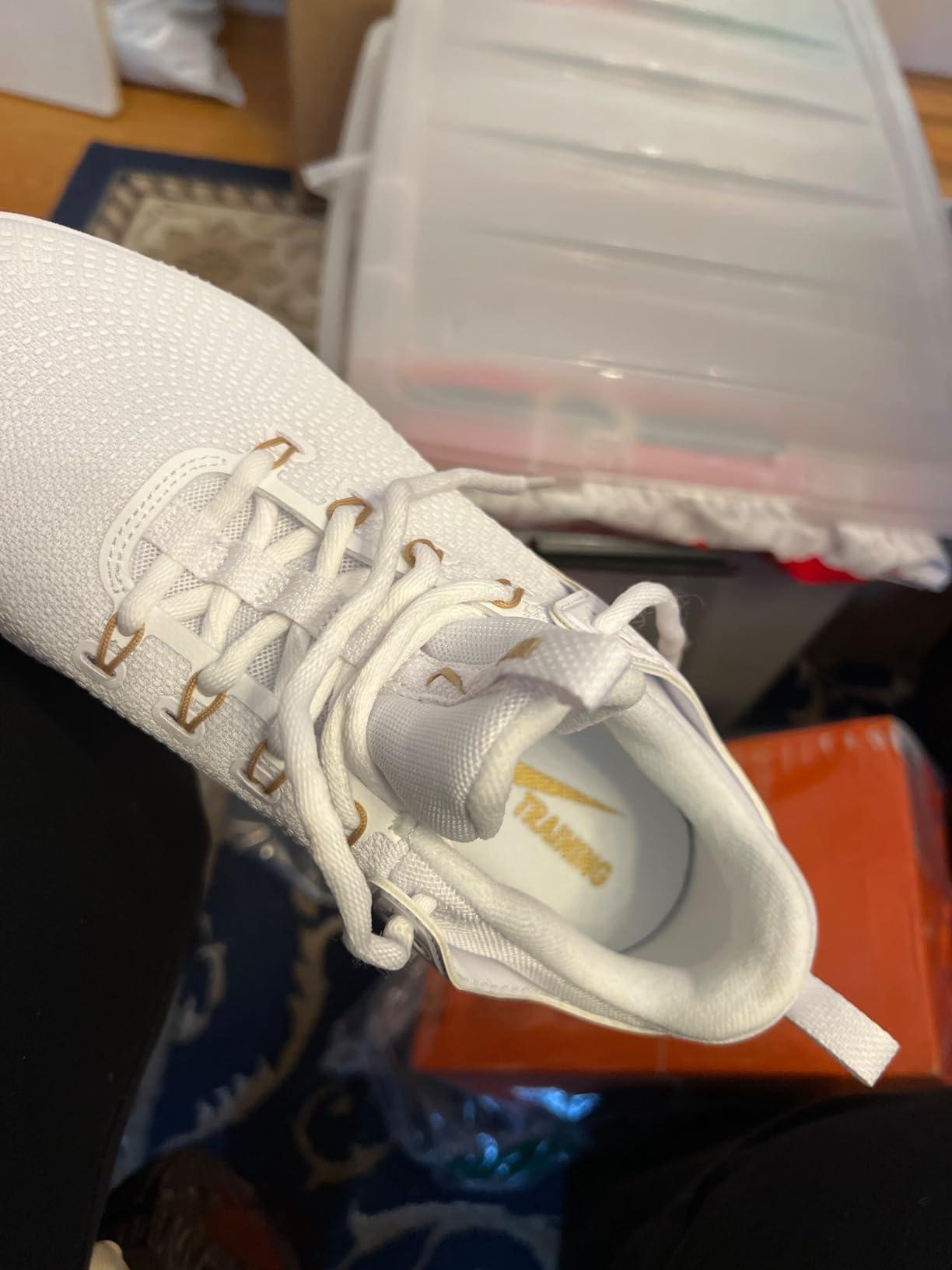
My Overall Assessment
Detailed Performance Scoring
Comfort (8.5/10): Once you get the sizing right, these are genuinely comfortable for extended court time. The ankle support feels secure without being restrictive, and the Zoom Air cushioning handles volleyball’s jumping demands well. Half point deducted for the sizing confusion and narrow toe box.
Performance (8.7/10): Excellent court feel, superior traction on indoor surfaces, and responsive cushioning. The ankle support really helps during aggressive play. Minor points off for traction maintenance needs on dusty courts.
Durability (6.8/10): This is the biggest concern. For recreational play, they’ll last a season or more. For intensive club volleyball, several users report issues within 2-3 months. The price point suggests better durability than what some users experience.
Versatility (8.2/10): Great for volleyball, good for other court sports like pickleball. The clean colorway works with any uniform. Not ideal for outdoor use or cross-training.
Value (7.4/10): At $100, they’re priced in the mid-range but perform closer to the higher end. The durability concerns keep this score from being higher. For the right user (recreational to moderate competitive), the value is solid.
Overall Score: 7.9/10
What Other Volleyball Players Are Saying
The community feedback has been consistently positive about performance, with recurring themes around comfort, ankle support, and traction. However, there’s a clear pattern of durability concerns among more aggressive players, particularly liberos who do a lot of floor contact.
Parents consistently mention that their daughters love the comfort and appearance, while coaches appreciate the ankle support for developing players. The sizing issue is mentioned by about 70% of reviewers, so this isn’t an isolated concern.
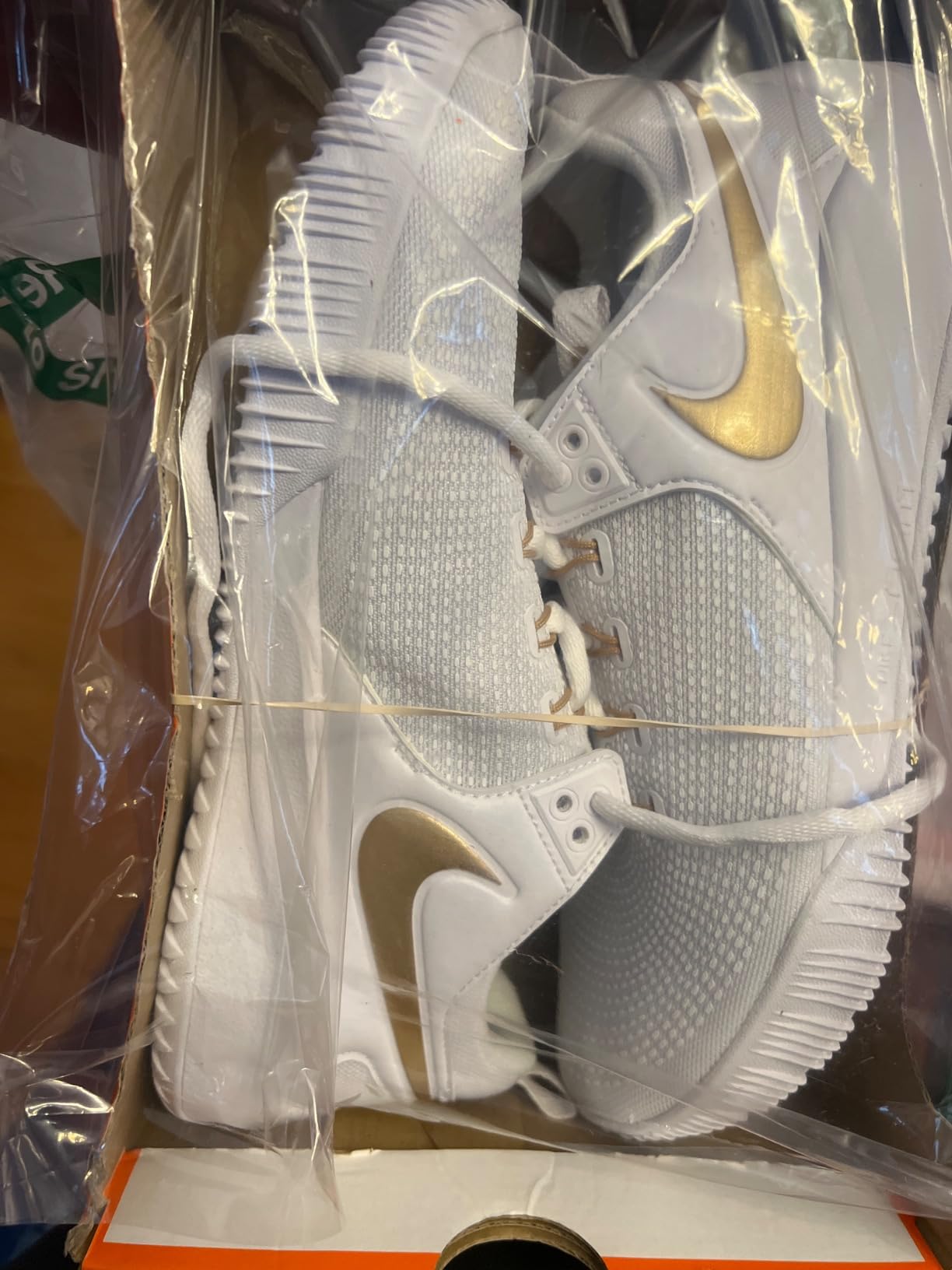
Value Assessment
At $100, the Nike Zoom HyperAce 2 sits in a competitive space. You’re paying Nike premium pricing, but you’re getting legitimate performance benefits. The ankle support, court traction, and cushioning justify the cost for serious volleyball players.
However, if you’re looking for maximum durability per dollar, or if your daughter is hard on shoes, you might want to consider alternatives or budget for replacement sooner than you’d expect from a $100 shoe.
Final Verdict
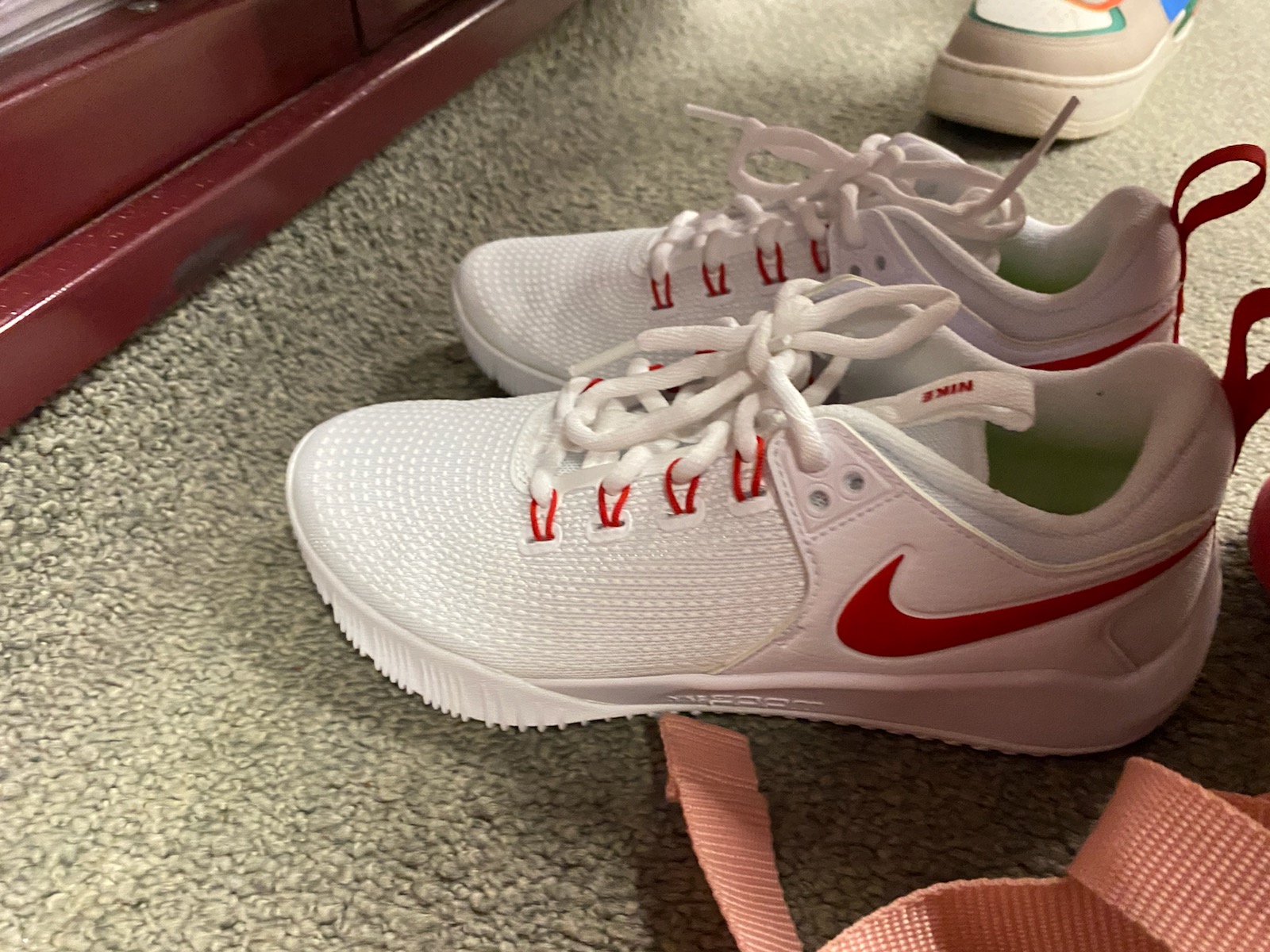
The Good and The Bad
| Strengths | Weaknesses |
|---|---|
| Excellent ankle support and stability | Runs small – must size up |
| Superior indoor court traction | Durability concerns for intensive use |
| Responsive Zoom Air cushioning | Narrow toe box fit |
| Lightweight court feel | Higher price than some competitors |
| Easy break-in period | Requires traction maintenance on dusty courts |
Who Should Buy the Nike Zoom HyperAce 2?
Perfect for:
- Recreational to competitive high school volleyball players
- Players who prioritize ankle support and court feel
- Women with average to narrow feet
- Players who compete primarily on indoor courts
- Those willing to invest in performance over maximum durability
Consider alternatives if:
- You have wide feet or prefer roomier toe boxes
- You’re a libero or extremely aggressive floor player
- You need maximum durability for intensive club volleyball
- You’re budget-conscious and prioritize longevity over performance
- You frequently play on outdoor or multi-surface courts
Better Options for Specific Needs
For Maximum Durability: Consider Mizuno Wave Lightning or ASICS Gel-Rocket series
For Wide Feet: Look at New Balance Fresh Foam X 70 or Adidas Crazyflight
For Budget-Conscious: Nike Zoom HyperAce (original) or ASICS Upcourt series
For Multi-Sport Use: Nike Air Zoom Vapor or Adidas Barricade
Final Recommendation
The Nike Women’s Zoom HyperAce 2 is a solid volleyball shoe that delivers on its performance promises. If you get the sizing right and your playing style matches its strengths, you’ll love the ankle support, court traction, and responsive cushioning. Just be realistic about durability expectations, especially for intensive play.
For most high school and recreational volleyball players, this shoe will enhance your game and keep you comfortable throughout the season. The $100 investment is justified by the performance benefits, but budget for potential replacement sooner than you might expect from other brands.
🛒 Get the best deal:
Frequently Asked Questions
How do Nike Zoom HyperAce 2 volleyball shoes fit?
They run small and narrow. Most users recommend sizing up at least half a size, with many going up a full size. If you normally wear size 8, try 8.5 or 9. The toe box is narrower than typical Nike running shoes.
Are these good for wide feet?
Unfortunately, no. The narrow toe box and overall snug fit make these challenging for wide feet. Consider Adidas Crazyflight or New Balance alternatives if you have wider feet.
How long do they last with regular volleyball use?
For recreational to moderate play (2-3 times per week), expect 6-12 months. For intensive club volleyball with aggressive play, some users report durability issues within 2-3 months, particularly sole separation.
Can I use these for other sports besides volleyball?
Yes, they work well for pickleball, badminton, and other indoor court sports. The traction and support translate well to similar activities. Not recommended for outdoor sports or running.
Do they work with ankle braces?
The mid-top design can accommodate ankle braces, but some users report the laces are too short when wearing braces. The fit becomes much tighter, which can affect comfort and circulation.
How’s the traction on different court surfaces?
Excellent on clean indoor volleyball courts. Good on basketball courts and other hardwood surfaces. Requires more maintenance (wiping soles) on dusty courts to maintain optimal grip.
Are they worth the $100 price tag?
For performance-focused volleyball players who prioritize ankle support and court feel, yes. The price is justified by the technology and performance benefits. However, if durability is your top priority, there are better value options available.
What’s the break-in period like?
Relatively easy break-in, typically 2-3 practice sessions. They may feel stiff initially, but most users report good comfort within the first week of use.
Review Scoring Summary
| Category | Score (1-10) | Key Notes |
|---|---|---|
| Comfort | 8.5 | Excellent once sized correctly, great ankle support |
| Performance | 8.7 | Superior court traction and responsive cushioning |
| Durability | 6.8 | Concerns for intensive use, adequate for recreational |
| Versatility | 8.2 | Great for volleyball and other court sports |
| Value | 7.4 | Good performance for price, durability concerns affect value |
| OVERALL SCORE | 7.9 | Solid volleyball shoe with performance benefits |
Get the best price on Amazon:

